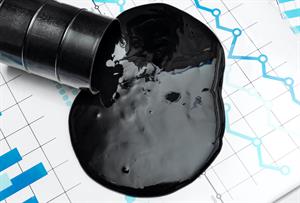
PUMPA - SMART LEARNING
எங்கள் ஆசிரியர்களுடன் 1-ஆன்-1 ஆலோசனை நேரத்தைப் பெறுங்கள். டாப்பர் ஆவதற்கு நாங்கள் பயிற்சி அளிப்போம்
Book Free DemoPetroleum is a type of fossil fuel made from the decaying remains of ancient sea life. Petroleum is a complex mixture of hydrocarbons found in liquids, gaseous and solids form on the Earth's surface. The term "petroleum" commonly denotes the liquid form, crude oil. However, petroleum also contains natural gas and bitumen, which is a solid type of petroleum. The principal fossil fuels are natural gas and crude oil.
Occurrence of Petroleum in India
Petroleum is discovered in Assam, Gujarat, Maharashtra (Mumbai), Andhra Pradesh (Godavari and Krishna basin) and Tamil Nadu in India (Cauveri Basins). After drilling through the earth, crude oil is pumped out of a well as a black liquid.
Refining of Crude Petroleum
The crude petroleum extracted from the well is a black, viscous liquid containing numerous contaminants such as water, solid particles and gases like methane and ethane. It must be separated into multiple components to be helpful for diverse purposes. The process of separating petroleum into usable by-products and removing unwanted impurities is called the Refining process.

Crude Oil
The steps involved in the process of refining of crude petroleum are listed below:
- Water separation
- Removing sulphur compounds
- Fractional distillation
Step 1: (separation of water)
The crude oil extracted from the oil wells will contain seawater (saltwater). The water in the crude oil is removed in the first step.
Step 2: (separating sulphur compounds)
Since crude oil has harmful sulphur compounds as impurities, these are removed in the second step.
Step 3: (Fractional distillation)
Fractional distillation separates components in a chemical mixture into different parts (called fractions) based on their boiling points.
Petroleum is a mixture of many components, including petroleum gas, petrol, diesel, kerosene, lubricating oil, paraffin wax, etc. In fractional distillation, fractionating columns are used to separate petroleum fractions.
In a furnace, crude petroleum is first heated to around 400°C. The various fractions condense according to their boiling point ranges as the crude oil vapours go up the tower.
The table below lists the various petroleum fractions obtained.
S.No. | Products obtained | At temperature |
1. | Refinery gas | < 40°C |
2. | Petrol | 40-205°C |
3. | Naphtha | 60-100°C |
4. | Kerosene | 175-325°C |
5. | Diesel | 250-350°C |
6. | Lubricating oil | 300-370°C |
7. | Fuel oil | 370-600°C |
8. | Residue (Bitumen for roads and roofs) | > 600°C |
Petroleum and natural gas are used to make a variety of useful compounds. These are termed 'Petrochemicals'. Detergents, fibres and other man-made plastics, such as polythene, are manufactured using them. Petroleum is also known as "Black gold" because of its high commercial value.
Reference:
https://www.etftrends.com/wp-content/uploads/2020/03/Crude-Oil-Crush-Continues-As-Short-Oil-ETFs-Reap-Benefits.jpg